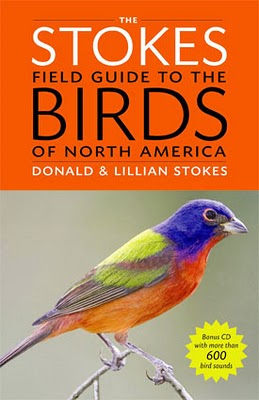While their beginner guides (shorebirds, hummingbirds, etc.) are very good, I have never been impressed with the larger field guides to birds by Donald and Lillian Stokes. Their eastern and western guides include one or two photos for most birds, not enough to provide a good presentation of many species. So when I heard that the Stokes were releasing a new guide to the birds of North America, I wondered what they might bring to the already glutted field guide market.
What they brought was the most comprehensive field guide on the market to date. Each species is represented by two to twelve photos. The species that have complex plumage cycles, such as gulls and shorebirds, are shown in every plumage type. You can actually see a photo of a third-cycle Thayer’s Gull. Not even the National Geographic guide goes that far. All four subspecies of Cackling Goose are illustrated, with close-ups showing the bill shapes.
In addition to extensive coverage of the regularly occurring species, the Stokes have included virtually all the vagrants reported from North America. There are three photos each of Great Spotted Woodpecker and White-throated Thrush. The Sibley Guide doesn’t even mention these species.
Whenever you have a collection of several thousand photos, there will be a few that don’t look quite right. The adult Glaucous-winged Gull looks way too dark to me. As with most photographic guides, the seabirds are short changed. Many of the pelagic species are represented by distant grainy images. While some would argue that those poor distant views are similar what you are likely to experience in the field, I think a field guide should show as much detail as possible.
Many birders, myself included, prefer good paintings to photos. My ideal guide would be the Sibley Guide to Birds with an additional hundred or so species to make it a comprehensive guide to North America. But even those of us who prefer paintings still benefit from photos on occasion. And there is currently no better photographic guide to all the birds of North America than the new Stokes. This book has taken the Stokes from the periphery of the field guide genre to the forefront.

